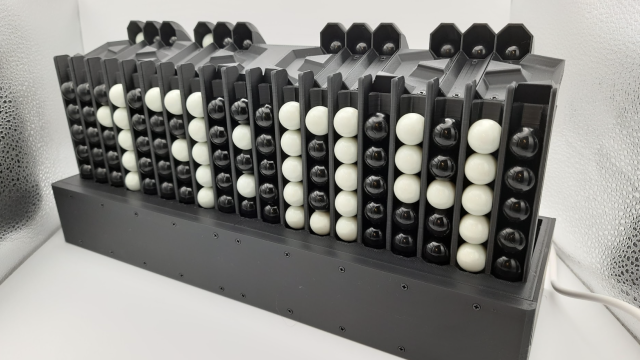We spoke to Teula Bradshaw, chief executive of the Sanjay Mortimer Foundation (sanjaymortimerfoundation.org), to find out more about their mission, what they’re doing to help more neurodivergent young people into engineering, and the legacy that Sanjay left behind.

HackSpace: Hi Teula! You’re the chief executive of the Sanjay Mortimer Foundation, which begs the question: who was Sanjay Mortimer?
Teula Bradshaw: Sanjay was a teacher. He found his love of making through his school and university years. And he also just loved teaching generally – even if you knew him in his later years, when he wasn’t a teacher, he was always listening to people. He was always interested in what they were working on; he wanted to help people with their innovation, with their ideas, with their plans. And he always had that really nurturing vibe.
He always had time for people. It didn’t matter how busy he was, if somebody had some kind of crazy idea, he would sit down and give them that time to explore it further. So naturally, he was a teacher and a listener.
His friend David Lamb was also a teacher, and they loved 3D printing and messing around with 3D printers. They developed this unique hot end, the V4. They had a go at putting it on the market, it sold out within seconds, and the idea of E3D was born.
The E in E3D stood for education; originally the plan was to try and get 3D printers into schools; they both felt, being teachers in the design and technology field, that there were just not enough 3D printers in schools. Then it just blew off the shelves, it went crazy.
They set up the company, and quickly realised they needed their good friend Josh Rowley, who specialised in engineering and coding, to join them. The three of them set up E3D, and it’s been the leading hot-end company around the world for many years now.
A lot of the innovation came from Dave and Josh, but it was Sanjay’s baby. His job title at E3D was ‘Visionary’ – that was his role.
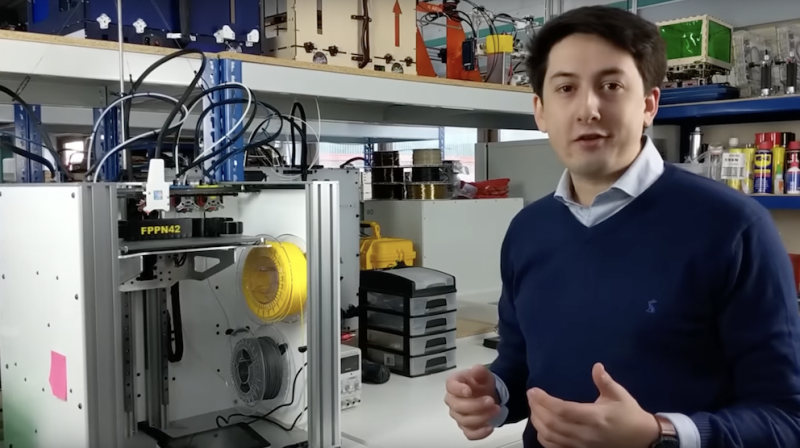
I sincerely hope he had that on his business cards.
Absolutely! It was on his business card; it was on his email signature… his role was visionary, which just says it all. He thought outside the box. He thought differently to a lot of people; he knew what customers wanted before they knew what they wanted. And he was always ten steps ahead, which really fuelled E3D’s growth.
Most of E3D’s customers were around the world, particularly the States. And so people knew of him; he would talk at events, and would be on Discord chatting to people all the time, discussing innovations and ideas.
He was such an open person. And that’s why he has so much love and respect in the community. He was passionate, shared his ideas, and would listen and help in any way he possibly could.
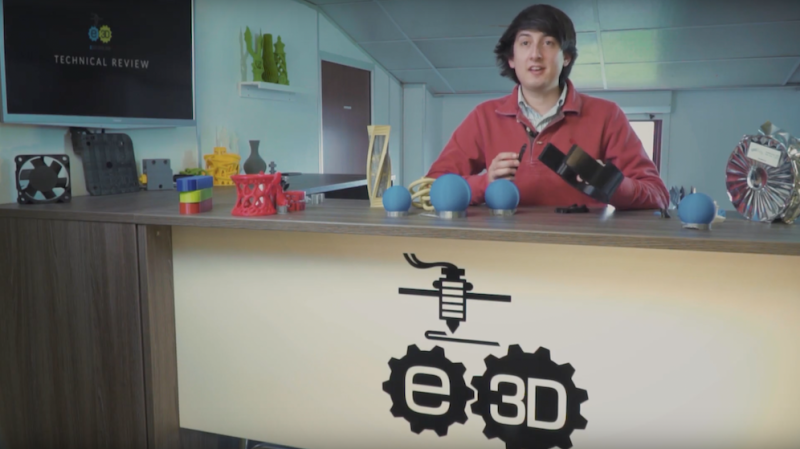
How did his neurodivergence affect Sanjay?
He had this chaotic, crazy personality, which was lovable – Sanjay was so, so lovable.
But it was also very difficult to work with somebody like that at times. Sanjay wouldn’t know when he was supposed to be in a meeting or who he was meeting with. He would come in, in a sort of whirlwind of drama. And he’d put his laptop here and his bag there and his mobile phone there, and he’s whizzing around talking to all the engineers and coming up with ideas. We’d have a Teams group and there was a constant theme on the chat: Where is Sanjay? Has anyone seen him? Has anyone seen Sanjay’s laptop? Which rabbit hole has he dived down into now?
As funny as that was, it was quite hard to help him structure his day. That’s where I came into Sanjay’s world; I was brought in to literally shadow him and be in charge of what he was doing, when he was doing it, and who he was doing it with, just to help bring some structure to his day.
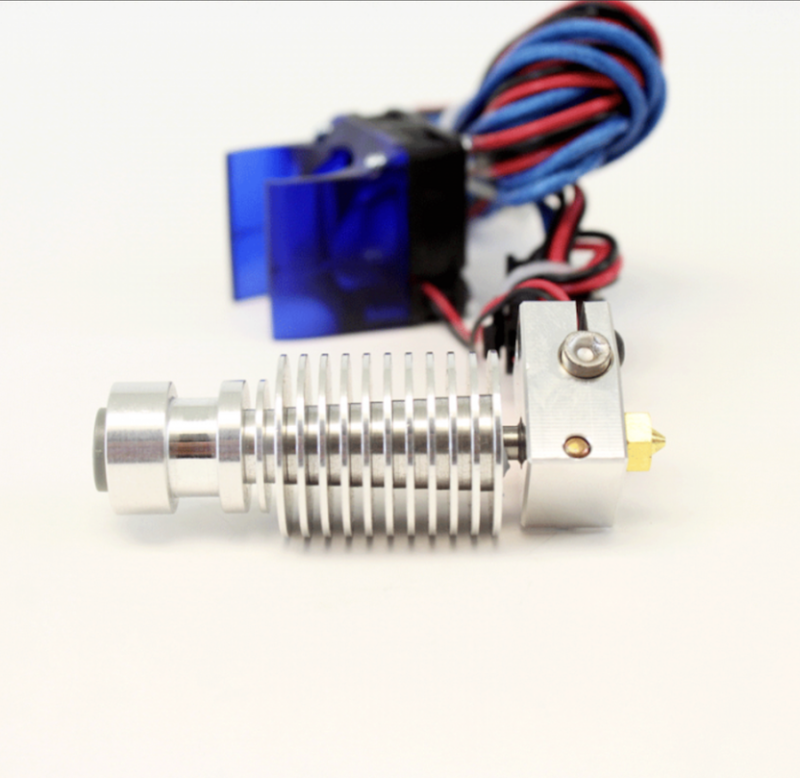
That was an amazing role to fill, because it was filled with madness, but a lot of fun. And hopefully, it really helped. And it meant that he was much more effective with his hours and his days.
But that was in his later years; as a kid he felt like he was up against it. He didn’t sit very well in a traditional educational setting. A lot of neurodivergent people respond really well to what’s called strength-based learning, which is when they’re learning a subject that they’re really interested in. Subjects that they’re not interested in, their brain goes off all over the place, they become agitated or fidgety, and potentially get labelled the naughty child at school.
He got that a lot, because he found things slow or boring. And so it wasn’t until later that he was allowed to really delve deeper into his making and his tinkering and doing what he really found that he was passionate about.
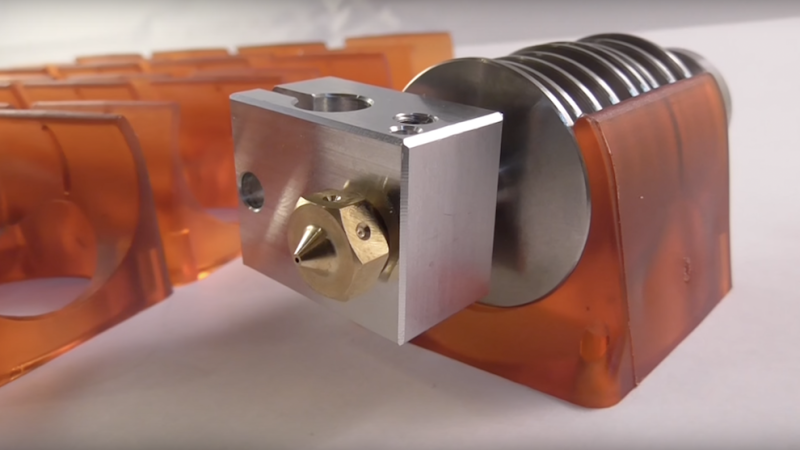
And this brings us on to what the foundation is all about.
It really is about that. It’s about giving our Stars the confidence and the self-esteem that they need to recognise that they can go on to thrive in their chosen field.
Often, young neurodiverse individuals have had a number of knock-backs –they’ve been told, “don’t do that”, “don’t do it like that”, or they’ve just been made to feel different to their peers. The Foundation is about celebrating those differences, and helping them to realise that that’s OK. They can harness what it is that they love doing, focus on that strength-based learning. The foundation is all about increasing the education in a field that they’re really interested in.
We focus on STEM – science, technology, engineering, and mathematics. That’s the area that we’re in, because there are other charities out there that focus on arts and drama and theatre. We just thought, let’s focus on what Sanjay was all about.
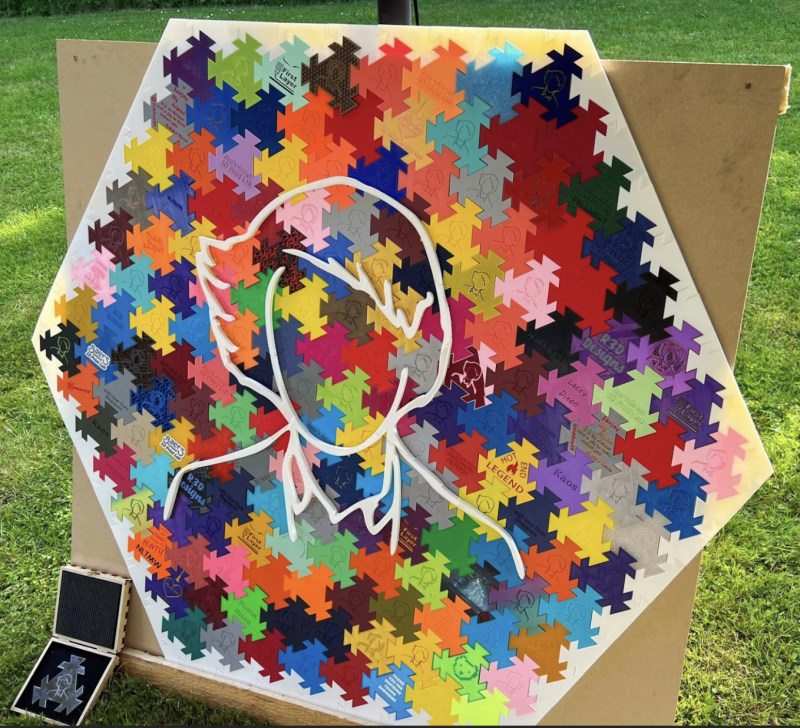
What sort of form does that take? I’m guessing that you can’t give everybody a right-hand man, so you need a slightly more scalable solution than that?
Our application process is open at the moment. To apply, you need to be between the ages of 14 and 25. We chose that age range because we had to choose an age range; we’d be spread too thinly if we decided to help absolutely everybody. Below the age of 14 you’re still learning all the academic subjects. It’s not until the age of around 14, 15, 16 that you start noticing where your strengths lie and what you enjoy.
And then 25 is the cut-off because we felt by that time – and this is a very generalised view – you will have manifested some coping mechanisms. And you’re a little bit more established, you’ve hopefully had some support that you need. That’s not always the case, but we had to have a cut-off somewhere and, hopefully, by then you’re in employment or you have the support to try and get you there.
We’re a charity registered in England and Wales. So you have to be resident in England and Wales. We want to go global, we really, really do – a lot of our support is from abroad. But in the initial stages, the Charity Commission is very strict about regulating a charity, and if it’s abroad and much bigger, it makes it very hard for them to regulate us. So the advice I was given was to set up as a UK charity to begin with, establish ourselves, get a few years under our belt, and make sure you’re not a big red flag to the Commission. Once you’re a well-known entity, you can spread your wings further.
The support we offer is completely bespoke and unique to that Star – we refer to them as our Stars or SMF Stars. So a Star will apply, and they will describe to us the challenges they’re having and a particular area of interest. It might be IT; it might be Formula One, you know, any kind of engineering that they’re particularly interested in. And then we work with our collaborators who are generally their teacher/tutor, could be their employer, or it could be the maker space owner, somebody who knows them – to come up with the best support possible.
That might be – as an example – funding them through further education. Through a training course, or a degree course. It might be providing them with a resource or a piece of equipment that they can use to further their education in the field that they’re interested in. It might be setting them up with work experience or an internship with a company that they would really love to get a foot in the door with.
We’ve got some mentors on our books, ex-engineers who have got time to mentor these kids. And everyone’s different. Our last Star, who is attending Brunel University, has a form of rare neurological fits. She’s developing a self-inflating airbag which protects her from injury when she fits.
There are similar devices on the market like this, but they are really expensive. One was I think, in Sweden, a device that you wear around your neck when you’re cycling, and if you fall, it inflates. And the other one is for old people who wear a vest – and if they fall, it blows up. She was desperate to get hold of these two pieces of equipment just to understand and take them apart and research them. The SMF bought these for her so that she could further her research and development on them for her own product.
Another of our Stars received 3D printers, work experience, and a laptop with relevant software to further his education in his chosen field. We are extremely grateful to our Partners, Prusa, E3D, Ask4Support, SolidSolutions and BrendonBuilds for helping us support him.

From your website, I learned that people with neurodivergent minds are highly under-represented in engineering degrees. That’s a surprise.
It is. The evidence shows that neurodivergent people get lost before they make it into engineering careers. They fall out of the system. And this is based on the fact that they have a tough time at school; they feel like they can’t achieve, they feel like they’re failing. And it’s because they haven’t been taught in this strength-based fashion. And so they drop out of the system, they don’t make it to senior school, or they don’t make it to university, and therefore they absolutely don’t make it into a career in engineering. That’s where that statement comes from.
Another stat is that autistic people have one of the worst employment rates in the country, and they are paid the least. It’s an awful statistic.
Applications opened at the beginning of February for this year. And my focus for this year is to try and get more Stars. Last year was very much the setting up phase. And we only got our charitable status in late November 2023. So in theory we’ve only been operating officially as a charity for three and a half months. Charitable status something that we really, really wanted; it brings us the benefits of Gift Aid; it brings in tax benefits for corporations that are supporting us. In order for us to operate, we need three things: one is our Stars, the people we support; two are our Collaborators – they are the teachers, the universities, the employers that are going to help us find the Stars.
Three are our partners; they are people that might do some fundraising initiatives on our behalf. Or they might have us as part of their corporate social responsibility and support us. Or they might be people who provide work experience opportunities or internship opportunities, or provide resources; they might donate printers or whatever it might be. So these are our three focus areas: the Stars, the Collaborators, and the Partnerships that make the whole circle of what we are and how we operate.

Last year saw the inaugural Sanjay Mortimer RepRap Festival, held at the University of Oxford. Will that be going ahead this year?
I can confirm that we will be holding it in partnership with Manchester Metropolitan University and PrintCity, and we will be holding it in their business school. It’s an amazing space. As beautiful as Oxford was, it had some limitations: accessibility was a major limitation. It was all on the second floor, which was logistically a nightmare, because everybody had to cart printers and equipment upstairs.

I saw a video of someone carrying a printer the size of a small car up an ornate flight of stairs. It looked like hard work.
That’s the Voron Phoenix, which is a truly unique printer. Yes, we’ve taken into account accessibility this year! It’s an incredible, modern, beautiful building that’s at the heart of innovation. We’re being supported by PrintCity, which is Manchester Metropolitan University’s 3D printing hub. And yeah, it’s going to be a great partnership. I’m doing much more work this year to make it more inclusive, more neurodivergent-friendly. We recognise that it’s a noisy event, but we’re going to be providing some quiet rooms that you can escape into, and maybe get some involvement from some headphone people, and we’ll behaving the speakers in a separate room.
The feedback from last year was that it was just such an incredibly open community and such a lovely friendly vibe. And that’s what we very much want to focus on again. There’ll be more focus on the SMF Stars, because by just attending, you’re supporting them and the charity.
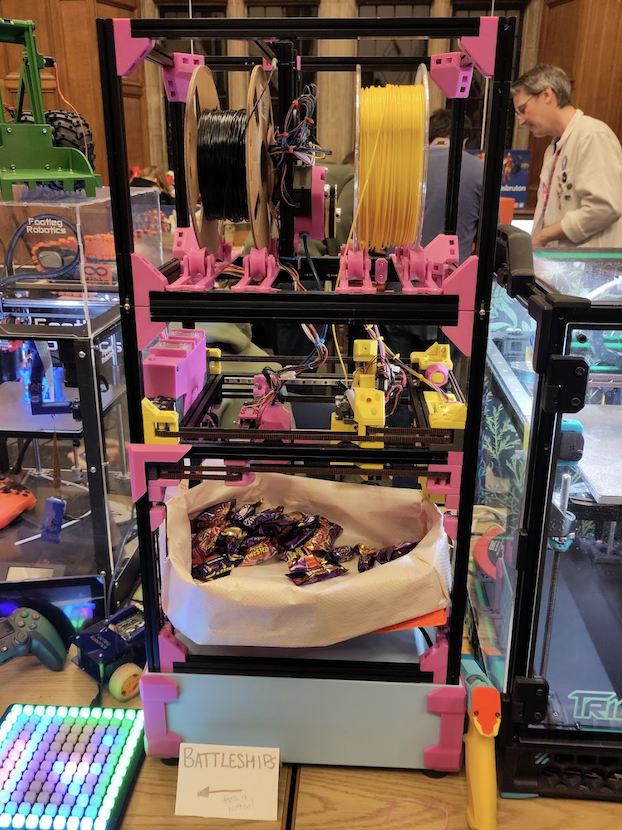
I bet you’ve had a whole load of support from within the 3D printing community. Everyone is just so nice.
That’s where the majority of our support comes from at the moment, and I am in awe of the community’s generosity. On a daily basis I hear about another fundraising initiative – somebody’s selling T shirts and the proceeds are coming to the SMF, or Zack Freedman’s fabulous Sanjay video, where he’s offered to donate royalties to us. It’s heartbreaking, but it’s fabulous. The plan is to expand to incorporate other engineering areas. But at the moment, because of who Sanjay was, the 3D printing community is where we have most of our support.

Who came up with the Smurf pronunciation for SMRRF? That’s genius!
That’s credited to Chris Pelesky, who co-organises the East Coast RepRap Festival. That’s ERRF [pronounced ‘erf’]. Then there’s the Rocky Mountains RepRap Festival, which is RMRRF, and now the Sanjay Mortimer RepRap Festival is SMRRF.
We were so tempted to have little blue men all over the venue last year, but we resisted the urge! What I love is that Sanjay would just be giggling. I think he would be seriously pleased and proud of the impact we’re having. It’s in celebration of him and what he’s done for the industry. I hope he’s pleased.






